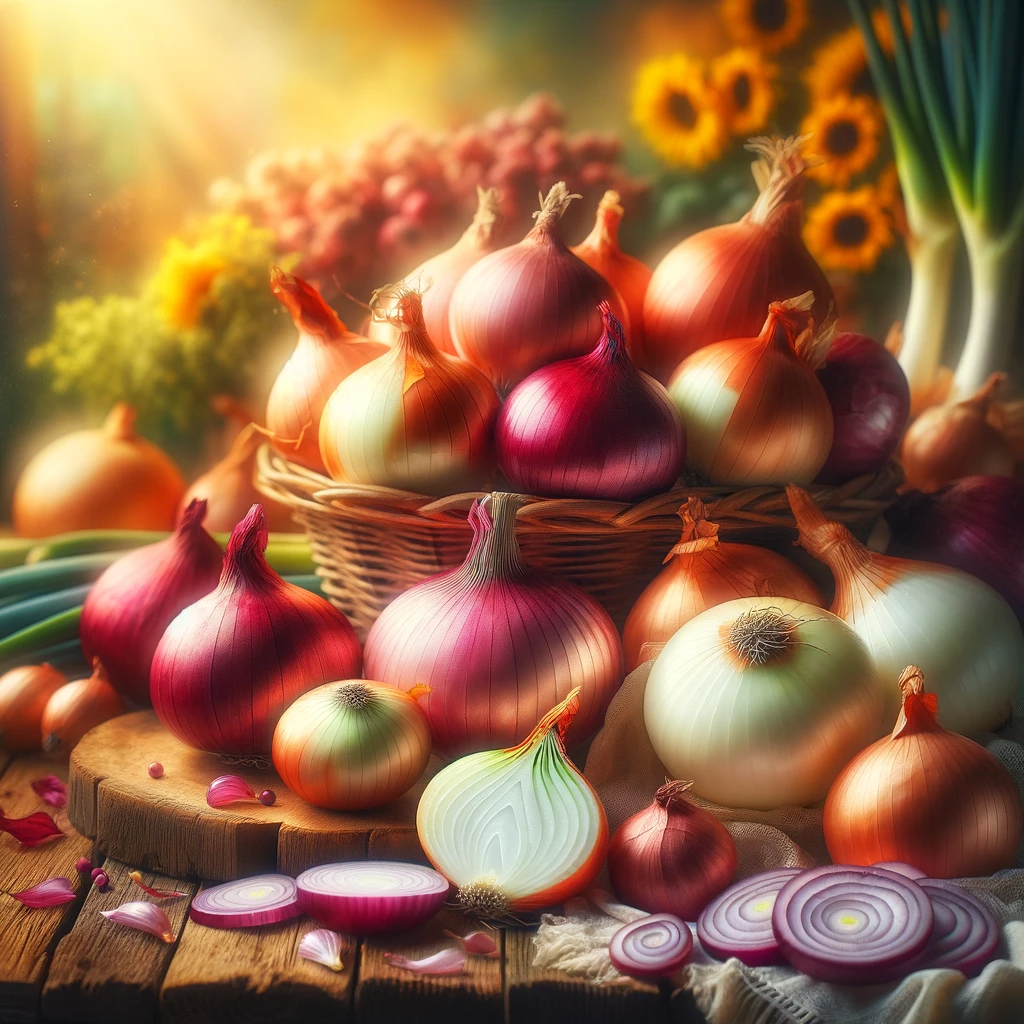Introduction: Onions are a fundamental ingredient in countless recipes around the world. Their versatility, unique flavor, and ability to enhance the taste of dishes make them a kitchen essential. In this comprehensive guide, we will explore the many facets of cooking with onions, from selecting the right type to mastering various cooking techniques. Whether you’re a novice cook or a seasoned chef, this article will help you unlock the full potential of this humble yet powerful ingredient.
1. Types of Onions Understanding the different types of onions is crucial when it comes to cooking. The three primary varieties include:
- Yellow Onions: These are all-purpose onions with a balanced flavor profile, ideal for most recipes.
- Red Onions: Known for their vibrant color and mild, sweet taste, they are often used in salads and raw preparations.
- White Onions: Mild and slightly sweet, white onions are perfect for salsas, guacamole, and Mexican dishes.
2. Onion Selection and Storage Ensure you choose the freshest onions with these tips:
- Look for Firmness: Select onions that are firm and have no soft spots or sprouts.
- Check the Skin: The skin should be dry and papery without any visible damage.
- Avoid Moisture: Store onions in a cool, dry, and well-ventilated place to prevent them from sprouting or rotting.
3. Cutting and Chopping Techniques Mastering the art of chopping onions is a fundamental kitchen skill. Try these techniques:
- Diced Onions: For a uniform size suitable for soups, stews, and stir-fries.
- Sliced Onions: Ideal for sautéing and caramelizing to add depth of flavor to your dishes.
- Minced Onions: Finely minced onions are great for sauces, dressings, and marinades.
4. Cooking Methods Onions can be prepared in various ways to create diverse flavors and textures:
- Sautéing: Softens onions and brings out their sweetness, perfect for stir-fries and sauces.
- Caramelizing: Slow-cook onions until they turn golden brown, intensifying their sweetness, great for topping burgers and pizzas.
- Grilling: Achieve a smoky flavor and appealing texture by grilling onion slices or rings.
- Frying: Deep-fried onion rings or fritters make for crispy, delicious snacks.
5. Flavor Combinations Onions can enhance the taste of countless dishes when combined with the right ingredients:
- Classic Pairings: Onions complement garlic, bell peppers, and tomatoes in many recipes.
- Sweet and Savory: Combine caramelized onions with dishes like quiches, sandwiches, and tarts.
- Balance Spices: Onions can balance the heat of spicy ingredients in curries and chili.
6. Health Benefits Onions not only add flavor but also provide health benefits:
- Rich in Antioxidants: Onions are packed with antioxidants that can help combat oxidative stress.
- Heart Health: They may lower the risk of heart disease and reduce cholesterol levels.
- Immune Boost: Onions contain vitamin C, which supports the immune system.
7. Tips for Reducing Tears Chopping onions can sometimes lead to watery eyes. Reduce tears with these strategies:
- Chill the Onion: Pop the onion in the freezer for a few minutes before cutting.
- Cut Under Running Water: This can help wash away the irritants.
- Use Sharp Knives: A sharp knife minimizes the release of tear-inducing compounds.
Conclusion Onions are an indispensable ingredient in the culinary world, adding depth, flavor, and nutrition to a wide range of dishes. By understanding the types of onions, mastering cutting techniques, exploring various cooking methods, and pairing them with the right ingredients, you can elevate your cooking to new heights. With their health benefits and versatility, onions are truly a key ingredient in any kitchen. So, the next time you reach for an onion, do so with confidence, knowing that you hold the power to transform your meals into culinary masterpieces. Happy cooking!
